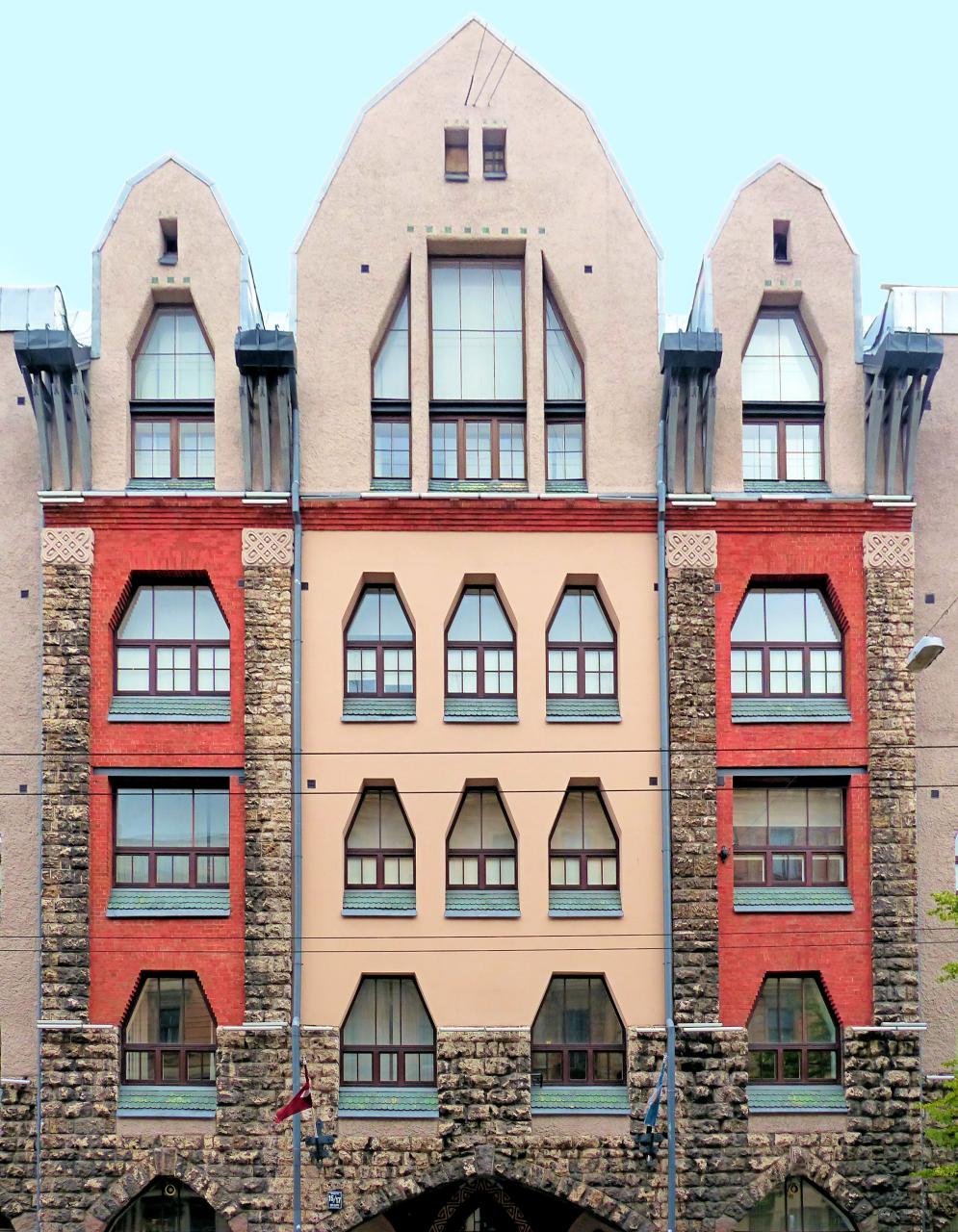#2722. Polychromatic Eclectic Facade with Gothic Gables
The presented building facade demonstrates a striking example of eclectic architecture with elements of neo-Gothic and Art Nouveau styles. The facade composition is symmetrical and divided into three vertical sections, where the central part is highlighted in a light beige color, while the side sections are designed in terracotta-red tones with inserts of stone masonry.
The upper part of the facade is crowned with three characteristic triangular gables that give the building a special expressiveness. The central gable is larger than the side ones and has two small windows under its peak, which enhances the vertical dynamics of the building. The windows of the upper tier feature large glazing and are framed with metal elements.
The middle and lower parts of the facade demonstrate a rhythmic alternation of trapezoidal windows, creating an interesting visual effect. Special texture is added by the contrast between smooth plastered surfaces and rough stonework in the lower part of the building and along the vertical dividing lines. The color scheme – a combination of beige, terracotta, and gray – creates a memorable image.
The first floor is designed with massive stonework featuring arched elements, which visually creates a solid "foundation" for the entire composition. The decorative details of the facade are minimalist yet expressive – one can notice small ornamental inserts between floors and geometric accents.
Overall, the facade represents an interesting example of turn-of-the-century architecture (late 19th to early 20th century), where functionality was combined with decorativeness, and the variety of materials and forms created a visually rich composition.
